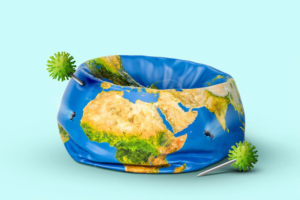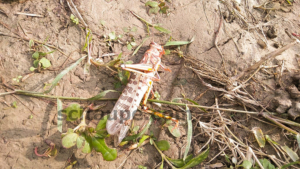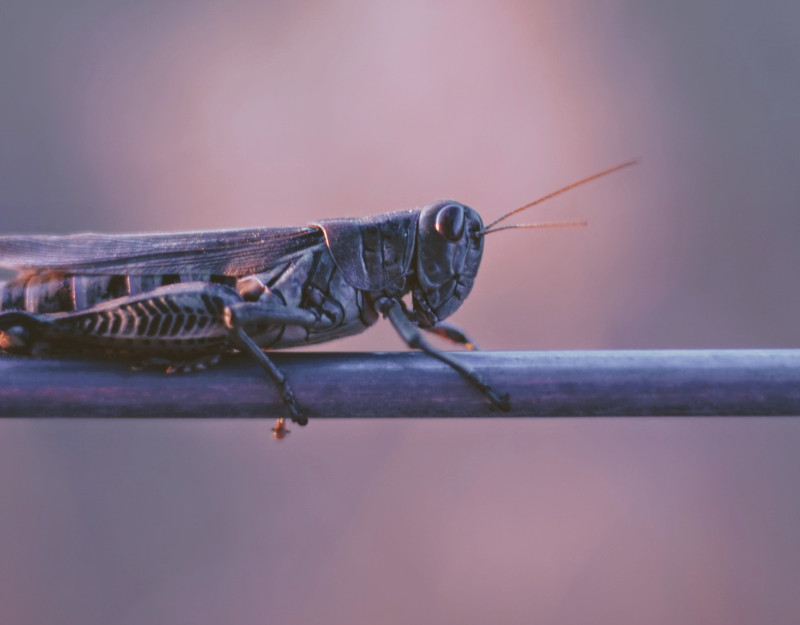
A hazy locust plague, of millions of migratory desert locusts, has wreaked havoc across many Indian states in the past week. It is all over the news for destroying food cultivation and causing discomfort to residents in many areas. Let us take some time and understand what is a locus plague after all.
A Brief Introduction to Locusts
Locusts are insects, one among the many species of short-horned grasshoppers, that can live both solitary or gregariously, forming swarms. They are herbivores and feed on green vegetation, food crops, leaves, flowers, fruits, seeds, bark and what not! Needless to say why they are alternatively called as pests.
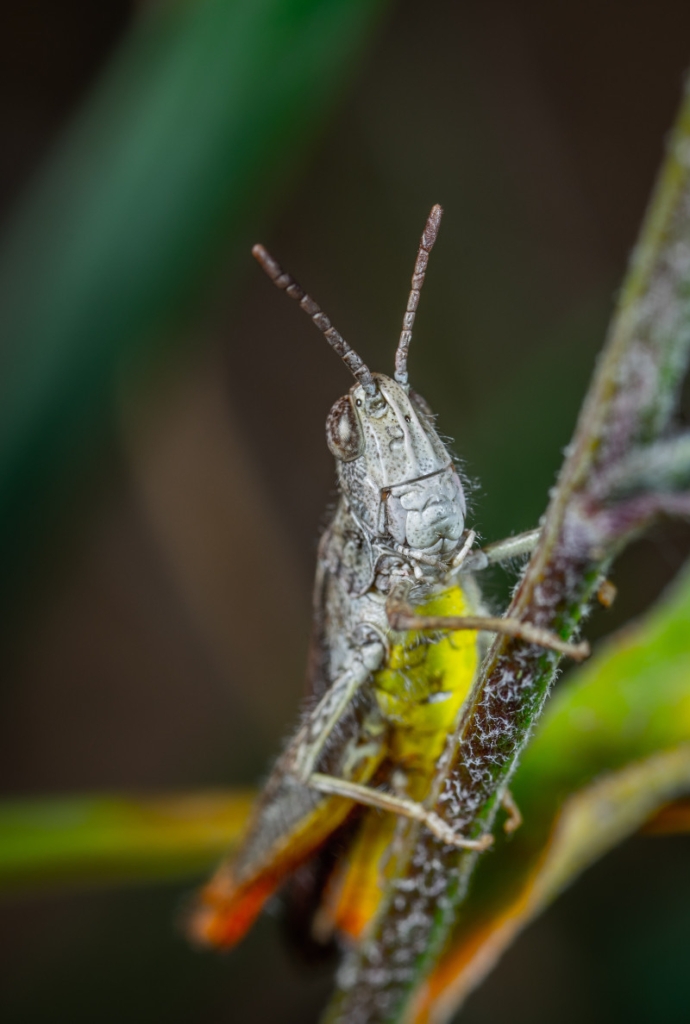
Desert Locust – A Notorious Member of the Tribe
One variety of locust, called desert locust, has the ability to adapt to different habits and habitats. These desert locusts usually reside in the arid or semi-arid regions of Africa and Asia that receive less than 200 mm of annual rainfall. Desert locusts are often considered most dangerous of all the other varieties of locusts
Life cycle of a Locust
Within a lifespan of 3-5 months, desert locusts multiply real fast. They lay 80-160 eggs on an average, at least three times in their lifetime, at intervals of about 6-11 days. The locust goes through three stages in it’s life: Egg, Hopper and Adult. Eggs hatch in about 2 weeks, hoppers develop in about 30-40 days and adults mature in about 2-9 months.
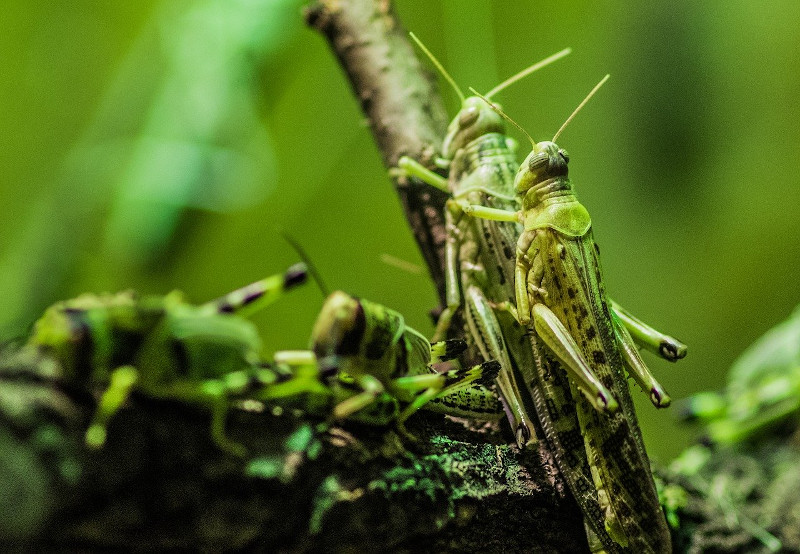
What is a Locust Plague?
A swarm of locusts is called a “Locust Plague”. Desert locusts, especially, are notorious for their dense and highly mobile plagues. A typical desert locust plague can be of 1200 square kilometres in size and contain 40-80 million locusts in less than a square kilometre. Also, a locust plague can migrate rapidly over large distances, about 130 kilometres or more in a day, gregariously feeding on green vegetation all along.

Reasons for highly mobile, rapidly moving locust plagues:
- They usually fly at a speed of about 16-19 km/h depending on the wind
- Locusts can stay in the air for very long periods of time, only resting at night
Why do Locusts form a Plague?
Swarming or formation of locust plague is their innate reaction to overcrowding. Under favorable conditions, locusts breed. As they come in contact with more and more other locusts, serotonin levels in their brain increase. This makes the locusts to change color, eat much more, and breed abundantly.
Often called happy chemical, Serotonin is the same chemical that contributes to the sense of happiness, good mood and well-being in humans.
As locust population increases more and more, they start forming swarms or plagues. The initial band is known as “outbreaks”, and when these join together into larger groups, the event is known as an “upsurge”.
Migration of Locust Plagues
As time passes by, the locusts become more and more united and the size of the locust plague increases. Food supply in their current habitat starts exhausting rapidly. A point comes when there is not enough food left for the locust plague to feed on. This is when they start migration, in search of food, to newer and better habitats.
Notable Locust Plague Migrations
In the past, there have been some notable and very long-distance locust plague migrations. Some examples below:
- North-West Africa to the British Isles in 1954
- West Africa to the Caribbean, a distance of 5,000 km in just 10 days in 1988.
- locusts regularly cross the Red Sea, a distance of 300 km.
Why are Locust Plagues dangerous?
First and foremost, Locusts do not harm humans. However, they feed on, thereby damaging, the basic need of humans. Food. Locust Plagues have, in the past, striped fields of their cultivation. Locusts of a plague have the ability to destroy plants just by resting on them in large numbers.

Massive Eaters
A Locust Plague can devour food of up to 35,000 people in a single day.
Food and Agriculture Organisation (FAO), United Nations.
Desert Locust adult can consume about two grams every day. Considering an average swarm of 40 million locusts, a small calculation as follows:
1 swarm = 40 million or 4,00,00,000 locusts
1 locust eats 2 grams of food per day
Locust plague or 40 million locusts eat 80 million grams of food or 80,000 Kilograms of food or 1,80,000 Pounds of food
1 elephant eats 600 pounds of food on an average
A Locust Plague can consume food of 300 elephants in single day.
Control and Mitigation of Locust Plague
The responsibility of locust control and mitigation primarily lies with the Ministry of Agriculture. Below is the common approach to control locust plagues.

Spraying of Insecticides
Organophosphate-based insecticides or pesticides are used to get rid of locusts. Since these are dangerous to humans and other wildlife, ultra low volume (ULV) formulation is generally used. Moreover, since locust plagues are spread over large areas, insecticides are aerially administered using drones. Vehicle-mounted spraying and sometimes hand-held sprayers is also done.
Biological Control of Locust Plague
Spores of naturally occurring fungus “Metarhizium anisopliae” are sprayed on a locust plague. These spores germinate on the skin of locusts and destroy the locust’s tissues from the inside.This fungus is not harmful to humans and animals. Only drawback is that it takes long time to act.
Green Muscle ® is a fungus based bio-pesticide developed and manufactured in South Africa.
Driving away Locusts with Noise!
A lesser known method of driving away locusts is by producing loud noise using drums, utensils or even music! This will be effective only for small locust plagues. There is also an idea on the internet to use low flying planes and utilize the noise to break the locust plague.
Locusts are Edible!
62% of the dry weight of a Desert Locust is protein. Besides being rich in protein, desert locusts also are a good source of inorganic minerals like iron, phosphorous, magnesium, calcium et cetera. The following uses of nutrient rich locusts are not unheard of.
Locust as Poultry Feed
In a strategic attempt to fight locusts, Pakistan is paying its farmers for catching locusts. There locusts are then converted to high protein poultry feed, a good, cheap alternative to soy-based feed.
Locust as Human Snack
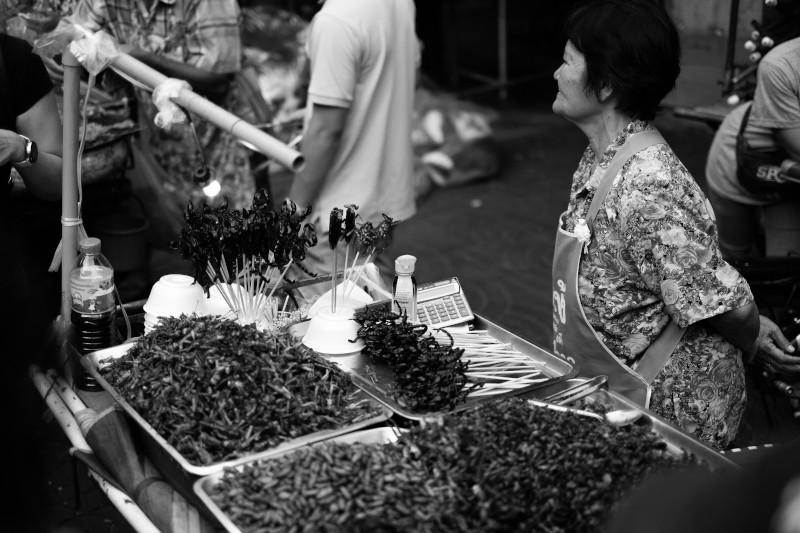
In parts of African, Middle Eastern and Asian countries, Locusts are eaten as a delicacy. They are usually stir-fried, roasted or boiled and eaten immediately or dried and eaten later. During periods of increased locust activity, it is not a surprise to see piles of dead locusts at local markets.
Why is Locust Plague so difficult to control?
- Locust plagues usually cover extremely large areas.
- Limited resources for locust monitoring and control
- Prediction of Locust plagues is difficult as they do not follow a pattern
- Spraying of insecticides manually or even through machines is a challenge
4,926 total views, 3 views today

